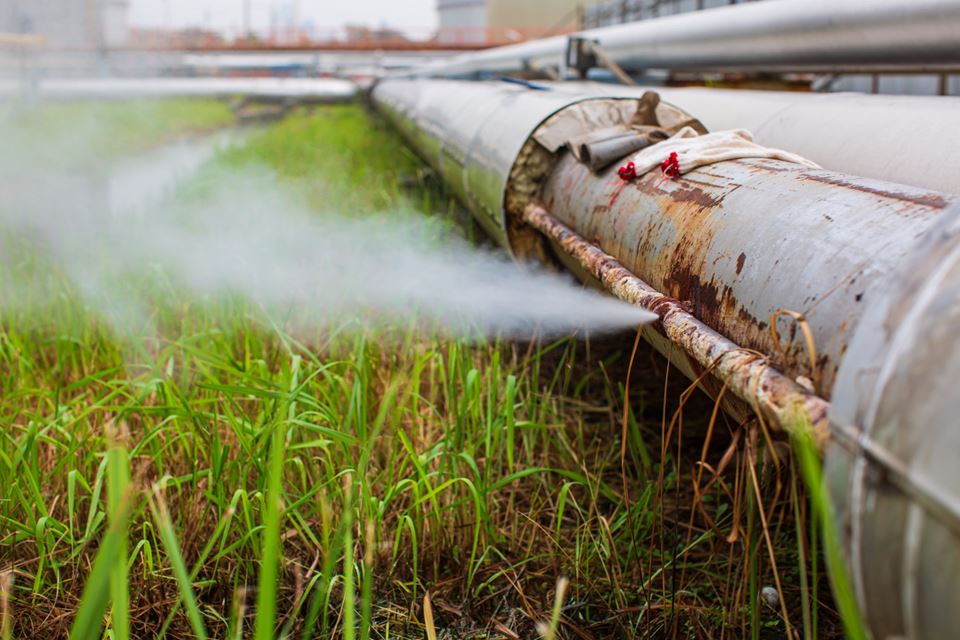Imagine a stretch of pipe that runs from Oslo to Tromsø, and back again. A total of 2000 kilometres. That’s the typical length of the pipe networks in an average processing plant.
A significant portion of these pipes are insulated, just like houses, with stone wool or foam glass. The insulation is necessary for heat loss reduction, noise cancellation, and fire protection. However, hidden from sight, corrosion can occur under the insulation – and, in the worst-case scenarios, cause holes in the pipe wall, leaks and damage.
SINTEF is developing a new technology for monitoring corrosion under insulation. This technology can reduce maintenance budgets by billions of Norwegian kroner (NOK) in Norway alone, and halve the amount of associated waste.
Corrosion can have severe consequences
Throughout industry history, corrosion under insulation has caused several devastating explosions. Even “minor” events have caused plants to halt production for months.
15 years ago, severe corrosion under insulation at a process plant in England caused a huge explosion. 50 tonnes of naphtha leaked, and flames reached as high as 30 metres in the resulting three-hour fire, causing a full shutdown for 8 months and approximately NOK 1 billion in repair costs.
In Norway, we have not had any major accidents caused by corrosion under insulation, but there have been several cases of corrosion-induced damage. Over the past decade, Norwegian operators have used significant resources on preventive maintenance.
- You might also like: The worst polluters in the Arctic are not what you think
Water moves
Even the best weather shields can be damaged during regular operation. One cause of corrosion under insulation is water ingress.
Once water has entered the insulation system, it can move around. Changing temperatures cause water to evaporate from one place and condense somewhere else. Therefore, corrosion can occur far from where the water initially entered the system.
Steel corrodes much faster in the closed environment under insulation than out in the open. Even stainless steel pipes are prone to this; they are particularly affected by stress corrosion, which is worsened by the salts that may be in the water.
As with other signs of corrosion, searching for water is often done “blindly” due to a lack of reliable monitoring solutions to reveal where water enters the pipe and where it ends up.
Blind repairs
Maintenance work is planned based on experience and risk assessments. Current practice is to remove all insulation from pipes and equipment at regular intervals, and visually inspect for corrosion. If corrosion is found, repairs are made, and the insulation is reassembled.
Nonetheless, performing maintenance in this fashion is expensive, as the inspected pipe segment is often in good conditions and in no need for repair. Furthermore, this method produces a lot of waste, as only a small amount of the insulation material can be recycled or burned.
However, new Norwegian research may solve this problem.
- You might also like: Scientists call for cap on production to end plastic pollution
A “weather forecast” for insulation
The technology that SINTEF is developing resembles a “weather forecast” for the insulation, i.e. it forecasts where water will end up. The weather stations are the moisture sensors mounted on the weather shield. Information is gathered by physics models and statistical tools to forecast the wet and dry areas of the systems. Without water there will be no corrosion.
The aim of this technology is threefold:
- A smarter path to high security: By performing targeted inspections, we’ll be more confident that dangerous corrosion can be detected in good time. Combining intelligent sensors with advanced data analyses enables us to pinpoint problem areas.
- Less waste: If the average process plant replenishes all its insulation on the “Oslo-Tromsø pipe run” as part of a 10-year maintenance program, the generated waste would equal a football stadium buried under 70 metres of insulation material. Estimates show that our solution may reduce waste by 50%.
- Less CO2: Greenhouse gasses emissions from the production of new insulation and weather-shield material for a single plant correspond to the yearly emissions of 2,000 petrol driven cars. In Norway, there are dozens of these plants, and in Europe, several hundreds. Calculations show that the technology can cut these CO2 emissions by 50%.
- You might also like: Making materials for the next generation of electric car batteries
Increased efficiency and reduced emissions
The main advantage of this technology is that it enables operators to target areas that are wet. This means that maintenance can focus on where corrosion is likely to occur without removing large parts of insulation from areas that are dry.
This will benefit both climate and environment by means of reduced CO2 emissions and less waste production. It also enables the high safety standards on plants to be strengthened, as maintenance budgets can be targeted to those areas that are affected by water.
This article first appeared in Norwegian in the magazine Teknisk Ukeblad May 9 2022 and is published here by courtesy of Teknisk Ukeblad.



